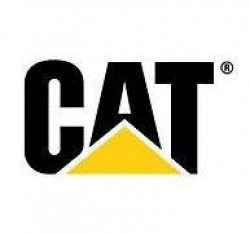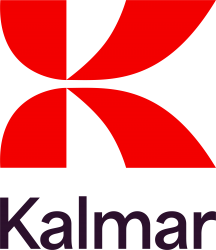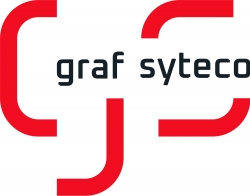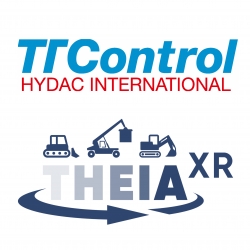Conference Program
Plenary - Day 1
Mining equipment – future potential for autonomous and electrical technology
 Joachim Stieler
Joachim StielerManaging director
Stieler Technologie- & Marketing-Beratung
Deutschland
Mining companies will electrify their operations by integrating renewable energy. Wind and solar, in combination with battery storage systems, will be part of future mines. This trend will influence the coming market for electrification solutions in mining. The presentation will show what kind of electrified equipment can be expected. In surface mining, there is potential for electrified dump trucks, mining drills and mining shovels. In underground mining, electrified loaders will play an important role. New electrified machines will offer opportunities for innovative suppliers. Autonomous technology will increase safety. Because of the available workforce, autonomy is requested. Electrification will support autonomy.
What the audience will learn
- How will future mines integrate renewable energy sources (solar and wind energy, hydrogen power) in off-grid mining operations?
- Electrifying mining operations will offer new opportunities, but what are the challenges for the different players in this business?
- Players in electrification of the mining business: the presentation will show OEMs and important suppliers and their innovations in mining
- What progress in electrification technology (e.g. battery storage and automation technology) will we see by 2030?
- How will autonomous technology change mining operations? What benefits will autonomous solutions have? What are the challenges?
Opportunities for off-highway decarbonization
 Philippa Oldham
Philippa OldhamStakeholder engagement director
Advanced Propulsion Centre UK Limited
Vereinigtes Königreich von Großbritannien und Nordirland
What role can hydrogen play in the decarbonization of off-highway vehicles? Hear about some of the case studies funded in the UK through the Advanced Propulsion Centre, along with insights on the technology development and supply chain opportunities.
What the audience will learn
- Examples of businesses that are making the transition
- Challenges in the supply chain
- Future trajectory of technology – H2 storage/FCEV/ICE
The flexible use of renewable fuels in non-road applications
 Paul Moore
Paul MooreTechnical engineering manager
Caterpillar Inc.
Vereinigtes Königreich von Großbritannien und Nordirland
For off-highway, the CO2 reduction legislative roadmap is neither defined nor yet proposed. Looking to non-road mobile machinery (NRMM), the demands on power density, integration, range, robustness, up-time and package space all indicate the future need for energy-dense fuels. These demands offer potential for a more holistic approach including renewable fuels. Besides hydrogen, other sustainable fuels such as alcohols, renewable natural gas and paraffinic fuels could be explored. Caterpillar will give an overview covering the future drivers, needs and boundaries of the NRMM sector. The possibilities of adapting existing powertrains for alternative fuels will be presented and discussed.
What the audience will learn
- The challenges of CO2 reduction in the non-road mobile machinery sector
- How a lifeccyle benefit view compares the use of renewable fuels in a combustion system to that of battery electric and fuel cell applications
- Review of the different potential renewable fuels
- Development challenges of these renewable fuels
- How Caterpillar is overcoming these challenges
Strategy procurement for electrification
 Jose Luis Garcia Rodriguez
Jose Luis Garcia RodriguezGlobal procurement category director - EV and innovation
Doosan Bobcat EMEA Ltd
Tschechische Republik
The presentation will provide an introduction to Bobcat's EV and innovation activities, with a summary of public projects to date. This will include innovation and R&D front-end challenges for procurement teams versus NPD project initiatives; the strategic procurement team's focus and contributions to front-end initiatives (innovation and R&D projects) to secure a smooth transfer to NDP project initiatives – lessons learned; supplier panel and OEM strategic approach needs for EV development to secure success within a niche market and fast-paced environment.
What the audience will learn
- Overview of Bobcat's main EV initiatives and focus to date
- Challenges and contributions from strategic sourcing into front-end activities related to EV development
- Bobcat lessons learned
- OEM and supplier strategic approach needed to secure EV business success
Interactive Q&A with audience
Electrification, powertrains and alternative fuels
How to optimize powertrain efficiency with cost-competitive IGBT?
 Mikel Peral
Mikel PeralCEO
NX Technologies
Spanien
The presentation explores the current challenges and advances in electric mobility, focusing on motor controller efficiency. It evaluates the role of silicon carbide (SiC) technology in optimizing motor controller performance, particularly in electric vehicles (EVs). The discussion includes benchmarks of EV efficiency, energy loss analysis and comparisons between SiC and IGBT-based inverters. NX Technologies introduces its proprietary VarioSwitch motor control software as a competitive alternative, achieving SiC-like efficiency improvements with IGBT inverters with no extra hardware cost for the vehicle.
What the audience will learn
- How efficient current electric vehicles are: powertrain driving cycle efficiency is around 80% and this efficiency can be improved both with HW and SW
- SiC improves powertrain efficiency but SiC modules are 30-60% more expensive than IGBT power modules
- SiC cost curve will not reach IGBT cost. Producing SiC requires three or four times more energy and is 60% more carbon or emission intense
- There are electric motor techniques that can unlock extra efficiency with no extra cost for the vehicle
- Deploying this technology in vehicle production can unlock massive savings in cost and emissions for OEMs
E-telehandler – step by step to 70% longer operating time
 Dr Pascal Kiwitz
Dr Pascal KiwitzHead of innovation
Bucher Hydraulics
Schweiz
Conventional hydraulic systems with a central power supply often have much potential for increasing energy efficiency. The use of more efficient components can already bring a significant improvement, while innovative system architectures offer greater potential. The technical possibilities are many and varied, with the ideal solution always requiring careful consideration of technical and commercial factors. The presentation will offer a case study based on the electrification of the working hydraulics of a telescopic handler.
What the audience will learn
- The working hydraulics of mobile machines are major energy consumers
- The use of more efficient components can already bring significant improvements
- Innovative system architectures offer the greatest potential
- Deciding on an architecture is not least a trade-off between cost and efficiency
Modern electric powertrain: enabler for predictive maintenance
 Ville Eskelinen
Ville EskelinenCEO
Hevtec
Finnland
Modern electric powertrain components generate extensive data, which can be logged by the machine control units and used for predictive maintenance. For example, inverters typically offer a vast number of signals for analysis, and battery management systems provide detailed information on battery status and health. However, expertise is required to collect and analyze this data effectively. Scheduling planned maintenance before a machine breaks down, while at the same time avoiding unnecessary maintenance, brings direct valuable benefits for the end users, machine owners and OEMs.
What the audience will learn
- Electric powertrain components as a data source
- The difficulties in data gathering
- The benefits of predictive maintenance
Unlocking maximum power – leveraging modularity for efficiency and cost
 Dr Bernhard Burkhart
Dr Bernhard BurkhartManaging director and head of R&D
Engiro
Deutschland
Almost every sector is pressured with tremendous emission reduction goals, up to complete elimination in inner-city applications. However, the current market situation with low volume and high variability is an obstacle for wide adoption of electrified machinery. A modular product approach offers a solution to optimize components for applications without cost penalties. This presentation will show how modular motors and inverters can offer efficiency optimization depending on the drive cycle of the final application, while offering fast time-to-market and minimized qualification and certification cost.
What the audience will learn
- Benefits of a modular motor concept: profiting from flexibility and scalability
- Level up: finding the best way to optimize components for efficiency and cost
- Challenges in drive parameterization: ways to a perfect setup
Innovative modulation and compensation significantly improve SiC inverter platform efficiency
 Pierre Delatte
Pierre DelatteCTO
Cissoid
Belgien
Optimized pulse patterns (a unique 'frequency-less' modulation scheme) combined with dead time compensation significantly reduce distortion and harmonics in the electromotor, bringing critical benefits in size, weight, cooling needs and NVH to the drivetrain. Implemented on a flexible and fully customizable silicon-carbide-based inverter platform, case studies are discussed to compare simulations with real-world results. Inverter solutions from the power electronics, over fully functional reference designs to control software, are presented.
What the audience will learn
- What are optimized pulse patterns and what benefits do they bring?
- OPP case study – simulations versus motor bench measurements
- A practical implementation of dead time compensation and the benefits
- DTC case study – simulations versus motor bench measurements
- Silicon carbide inverter solutions
Evolution of autonomous industrial vehicles
A robust multi-industry autonomy stack for the next generation of machines
 Dr Stephan Matz
Dr Stephan MatzManaging director
Driveblocks
Deutschland
The agricultural, construction and mining industries are facing very similar challenges: a constantly growing pressure on productivity, quality and ecological sustainability, with sparse production resources such as land, water and energy availability and shortage of well-educated labor. Driveblocks develops a scalable autonomy stack tailored to the specific technical and business needs of mobile machinery. Combining machine learning with a multidomain foundation model and a unique multimodal sensor fusion algorithm, we achieve superior performance in critical scenarios with ten times less data demand. Our modular AD stack and universal data model enable scaling to various industries.
What the audience will learn
- Pressure to increase productivity, labor shortage and safety are the main drivers making automation of mobile machinery a highly attractive business
- The technical challenge is the robust and reliable perception of the environment under real-world conditions
- In contrast to passenger car applications, mobile machinery is low volume and therefore requires a more universal, adoptable and data-efficient AD stack
Revolutionizing agriculture through robotics and AI
 Dr Francesca Protano
Dr Francesca ProtanoHead of technology strategy and product innovation
CNH
Italien
The technological push is becoming increasingly stronger with faster innovation cycles. Technology in agriculture is taking off rapidly: the current trend sees farmers using consumer technologies every day. Agricultural machines are becoming more efficient to boost farmers' productivity. Robotics and artificial intelligence allow for optimized land use, streamlining treatments and reducing the use of herbicides.
Thanks to advanced 'Sense & Act' technology, which evaluates field conditions and adjusts the machine based on the detected parameters, the new sprayer, a result of the acquisition of Augmenta, is able to distinguish the soil (brown) from the growing plants (green), automatically spraying.
What the audience will learn
- The world of agriculture is changing rapidly
- Farmers need more reliable technological solutions to achieve higher productivity with sustainable resources
- How AI can support farmers' productivity
- How robotics can revolutionize farmers' habits
- The digitalization of the sector makes the agritech ecosystem more attractive to future generations
Leveraging machine learning for smarter machines
 Prabal Malviya
Prabal MalviyaMachine learning senior engineer
Danfoss Power Solutions
Dänemark
Machine learning is revolutionizing autonomous machines by significantly increasing their efficiency, enabling them to adapt to new conditions and facilitating data-driven decision-making. These advances lead to smarter, more responsive systems that can optimize operations and enhance productivity. However, implementing machine learning in autonomous machines comes with its own set of challenges, including the complexity of developing robust algorithms and ensuring safety and reliability. Addressing these challenges is crucial for maximizing the benefits of machine learning in autonomous systems.
What the audience will learn
- How machine learning can simplify the operation of vehicles, enabling a wider labor market, more productivity and a safer working environment
- How machine learning can transform data into insights that support better management of site operations
- How machine learning systems are developed and how they can be scaled across vehicles and new conditions to support business growth
- How with all its advantages, machine learning does have limitations and particular considerations for safety that can be mitigated with proper methods
Pathways to off-road autonomy in mines, construction and agriculture
 Dr YJ Lim
Dr YJ LimTechnical robotics product lead
MathWorks
USA
Recent technological advances make it easier to adopt autonomy in heavy equipment, yet challenges remain. Autonomous off-road vehicles must perform reliably in rugged environments and demanding tasks, requiring collaboration across diverse teams. Simulations play a crucial role in reducing risks, refining algorithms and enhancing performance. This presentation discusses solutions for off-road autonomy across construction sites, open-pit mines and farms. Topics include heavy equipment physical modeling, 3D simulation using the Unreal game engine, creating traversable regions, planning excavator trajectories and controlling haul truck paths. Discover how integrated workflows improve design, testing and collaboration, driving smarter solutions for heavy equipment across industries.
What the audience will learn
- Validate off-road vehicle performance through physical modeling and simulation
- Create traversable regions for rugged terrains and plan haul truck paths
- Use sensor fusion for excavator trajectory planning and collision avoidance
- Conduct 3D photorealistic scenario simulations with Unreal Engine for virtual testing
- Enhance design, testing and collaboration with integrated workflows using unified models
HMI, design and ergonomics
Connected vehicles data visualization in the era of electrification
 Waqas Hafeez
Waqas HafeezSenior manager - customer solutions
Kalmar
Finnland
The presentation shows how Kalmar has solved IoT connected machine data visualization, data analysis and advanced data driver challenges. It shows Kalmar's IoT data flow architecture and UX/UI for traditional cargo handling machines such as reach stackers and straddle carriers. It then takes the audience to the electric machines and charger data ingestion and visualization. It talks about the commonalities and differences in traditional and electric machine data visualizations, feedback and experiences from customers.
What the audience will learn
- Modern high-level architecture of IoT data pipeline for off-road vehicles
- How Kalmar is visualizing, analyzing and comparing the data for cargo handling machines
- How Kalmar has solved the electric machines and charger data visualization challenges
Next-generation HMI: unlocking operator-centric assistance with advanced technologies
 Steffen Dieterle
Steffen DieterleCEO
Graf-Syteco
Deutschland
Adding intuitive human-machine interface (HMI) systems into mobile machinery introduces groundbreaking operator assistance functionalities. Intuitive HMI enables context-sensitive decision support, adaptive user interfaces and automated diagnostics. Additionally, it helps predict maintenance needs, minimizing downtime. This synergy of advanced HMI technologies revolutionizes human-machine interaction, enhancing the efficiency, safety and reliability of mobile machinery, a topic extensively covered in this presentation.
What the audience will learn
- Advantages of embedded HMI systems
- Intuitive HMI design
- Interoperational on construction site through HMI
- Adding innovation via Multiline; BirdView and AI
- HMI - server-client - architecture possibilities
Good design? Nobody needs it – or maybe they do?
 Sven Heller
Sven HellerCEO
Create Next
Deutschland
Find out how good UX and UI design in the HMI sector makes industrial machines not only easier to operate but also attractive and future-oriented. The presentation shows how intuitive operating concepts and aesthetic design inspire users and give companies a decisive competitive advantage. You will learn how our focus on user-centered and attractive design supports innovation, productivity and market perception. Discover why user-centered design not only increases efficiency but also enhances machines emotionally and equips them for the market of the future.
What the audience will learn
- Why UX and UI are crucial for market attractiveness and innovation
- How intuitive UI design increases usability and productivity
- How aesthetic HMI design creates emotional engagement and user satisfaction
- Success stories: UX and UI as a competitive advantage in industry
- Tips for designing modern, intuitive and attractive interfaces
THEIA-XR – effective extended realities in machine operation
 Dr Martijn Rooker
Dr Martijn RookerSenior innovation projects and funding manager
TTControl
Österreich
This presentation disseminates the results of the EU-funded THEIA-XR R&D project, which explored and applied a set of extended reality (XR) technologies based on systematical use case analysis of work procedures in snow groomer, reach stacker and excavator operation. We prototypically iterated XR solutions that involve available digital data, novel sensors, projection, ambient light feedback, video augmentation and external displays to explore where XR technologies can help operators to be faster and more accurate, and increase the use of digital data and assistive functions. This presentation summarizes our first results and insights on effectively improving machine operation through XR technologies.
What the audience will learn
- Apply XR technologies in futureproof HMI
- Improve perception of digital information through XR interaction
- Effective design of XR information presentation
- Consideration of operators’ work routines and attention patterns in XR HMI